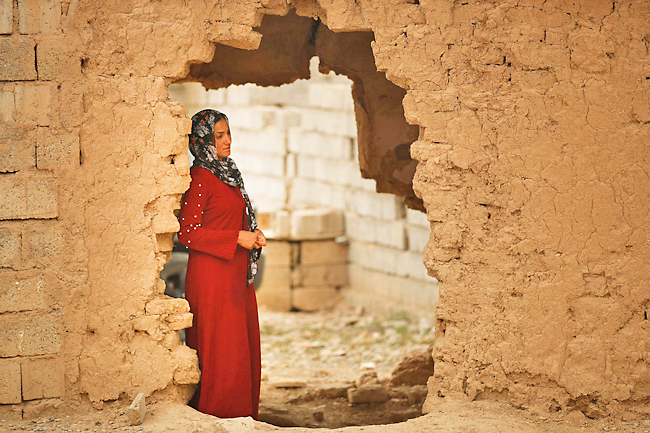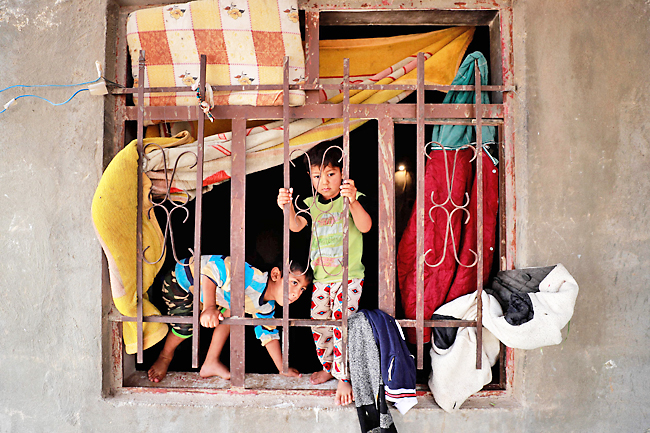HABASH (AFP) – In Iraq, maku means nothing, and father-of-five Issa al-Zamzoum says maku a lot: no electricity, no home, no rebuilding and no job.
Eight years after heavy fighting between Islamic State (IS) extremists and the army, the reconstruction of his war-ravaged village in northern Iraq is at a standstill.
“There is nothing here, no electricity,” 42-year-old Zamzoum sighed. “Even work, there is none.”
Zamzoum lives with his wife and family in Habash, some 180 kilometres north of the capital Baghdad, a village dotted with dozens of bomb-blasted houses still ruined from intense fighting in 2014.
Part of their roof, which caved in during the bombardment, still lies in crumbling wreckage.
In one room, a hen watches over her chicks. In another, filthy mattresses are piled up against the wall.
The building does not even belong to Zamzoum: his own home was left uninhabitable.
While the Baghdad government eventually celebrated military “victory” over IS in December 2017, the scale of destruction was immense.


“Reconstruction? We do not see it,” Zamzoum said gloomily. “Nothing has happened since the war.”
Habash paid a heavy price during IS’ siege of Amerli, a town less than 10 kilometres away.
In 2014, the extremists, who controlled the key northern city of Mosul and surrounding areas, moved south to attack Amerli, using surrounding settlements such as Habash as bases for their assault.
The combined forces of the Iraqi army, militias and Kurdish forces launched a counterattack to break the siege with gruelling street fighting, and IS forces were pushed out.
But for residents of the already hard-hit area, it was not the end of their suffering.
According to Human Rights Watch (HRW), after the siege “pro-government militias and volunteer fighters as well as Iraqi security forces raided villages and neighbourhoods” surrounding Amerli, including Habash.
HRW used satellite imagery to map “heavy smoke plumes of building fires, likely from arson attacks” in the village.
Today, nearly 20,000 people displaced by the conflict need aid in the area, according to the Norwegian Refugee Council (NRC), an aid agency. “Humanitarian needs are significant,” the NRC said.
As well as basic needs like clean water and electricity, even obtaining identity papers is a challenge.
“Many people have been displaced across governorates and face major barriers to travel to obtain civil documents,” the NRC said.
“Others face security clearance issues related to perceived affiliation with the IS” group, it added.
“Our life is a shame,” Zamzoum’s neighbour Abdelkarim Nouri said. “I don’t have a job. I have five sheep, and they are the ones keeping me alive.”
He said he had appealed to his member of parliament for support, but nothing had changed.
Nouri does not mention religion or talk of sectarianism – a deeply sensitive topic in a country where tens of thousands of people died during bloody inter-religious conflict in 2006-2008.
Now, over four years since the end of IS’ self-proclaimed “caliphate” in Iraq, many say they are victims of harassment and discrimination.
In Salaheddin province, where Habash is located, officials speak of “security risks” which are delaying reconstruction.
While Habash is under government control, the militants still operate just 15 kilometres further north.
On the road that leads to the village of Bir Ahmed, forces of the Hashed al-Shaabi stand guard.
“The situation in Bir Ahmed is beyond our control and that of the army,” an officer said. “You can get in, but I can’t guarantee you can get out.”






